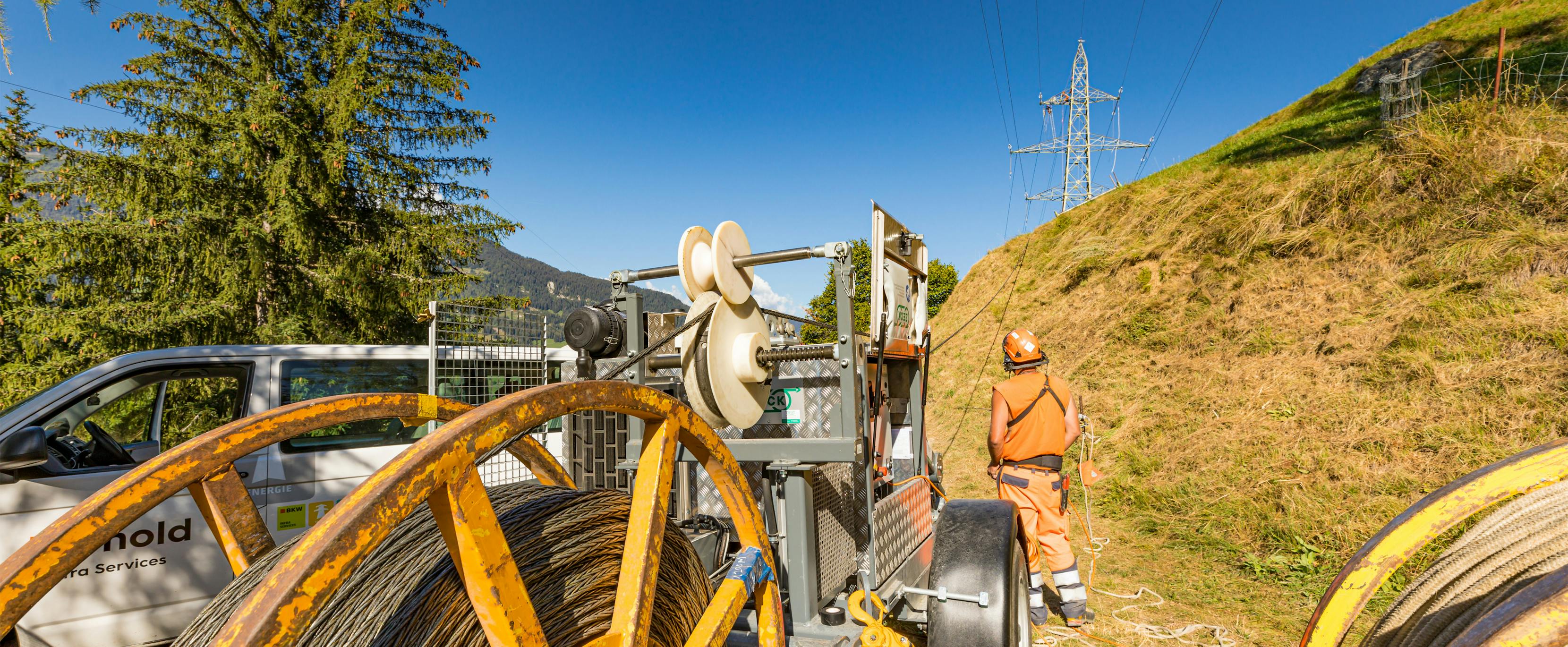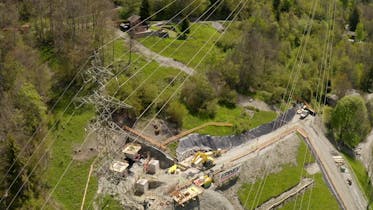
Since 5 November 2021, the electricity produced by the hydroelectric power plant in Fionnay in Valais has been transported via Swissgrid’s 220 kV Fionnay–Riddes overhead line. This line had been taken out of service in March 2021 to enable the construction of two new pylons on an area of unstable ground above the villages of Versegères and Prarreyer on the right-hand bank of the Dranse, in a place known as «Le Diablay» in the Val de Bagnes (see blog post from 29 June 2021).
The size of the foundations of the two new pylons 26 and 27 was calculated based on the specific nature of the locations. These particularly impressive feats of civil engineering were necessary to contain stresses caused by the movement of the earth and to guarantee the stability of the pylons at this site. The four bases of the new pylons were reinforced with 20 cubic metres of reinforced concrete per base and dug to a depth of six metres. In addition, they were interlocked using beams made from reinforced concrete, both in a square and crosswise. As it is impossible to change the nature of the ground, this interlocking technique limits any differential movement of the four bases.
While this area will continue to be subject to measurement activities, the new pylons are now equipped to withstand the natural environment at the site. They are also more compact than the old ones, reducing electromagnetic fields into the bargain.
No interruption to the transportation of the energy produced by the Fionnay power plant during the work.
One of Swissgrid’s missions is to ensure the transportation of the energy produced by the country’s large production units to the major centres of consumption on the Swiss Plateau. It is hard to envisage putting a power plant like Fionnay, which is part of the facilities of the Forces Motrices du Mauvoisin hydropower scheme, out of service for several months. For this reason, solutions must be found before carrying out work on lines like this in order to guarantee energy transportation. As Swissgrid’s 220 kV Fionnay–Riddes overhead line did have to be taken out of service for almost nine months, a temporary 65 and 220 kV connection was put in place beforehand to enable the power plant to continue production without any interruptions. This made it possible to carry out the construction work on the two pylons without cutting the supply of energy to the Val de Bagnes and in a completely safe manner for the workers employed on the construction site.
Guaranteeing the availability of ultra-high-voltage lines for production
Planning maintenance work on an ultra-high-voltage line is complex and begins around a year before the start of the actual work. The availability of the network has to be guaranteed at all times despite the maintenance tasks, which themselves have to be coordinated in advance with various Swissgrid partners.
The priority is always to avoid any interruption to the transportation of energy, and in the case of large-scale work such as on the 220 kV Fionnay–Riddes line, different solutions may be considered. The simplest consists of diverting the line that is being worked on to one or more other lines nearby with an identical or higher voltage. Another option, which allows the line to be taken out of service completely, is to coordinate maintenance work on the line with that on the power plant.
Swissgrid has also recently broken new ground in the field by undertaking maintenance work using a method and technology that enables maintenance work to be carried out on ultra-high-voltage lines completely safely without cutting the current (see blog post from 14 October 2020).







